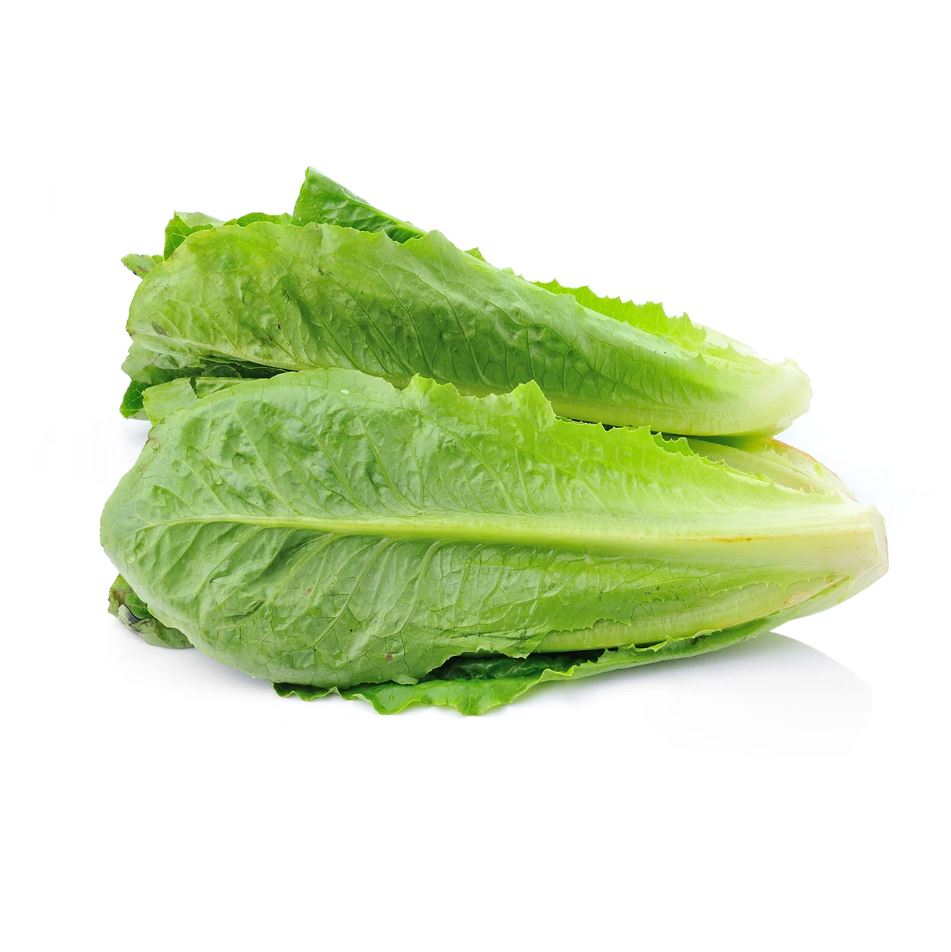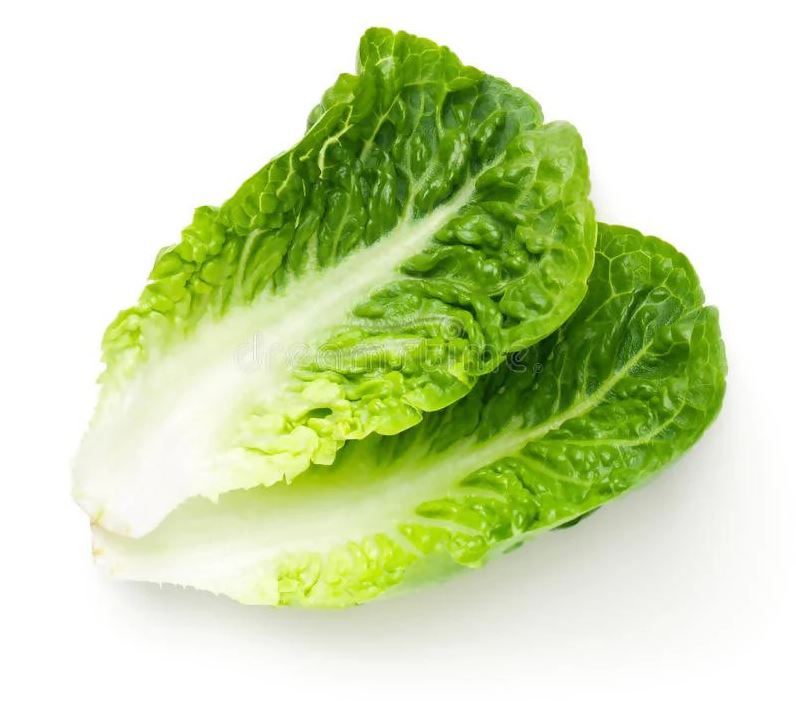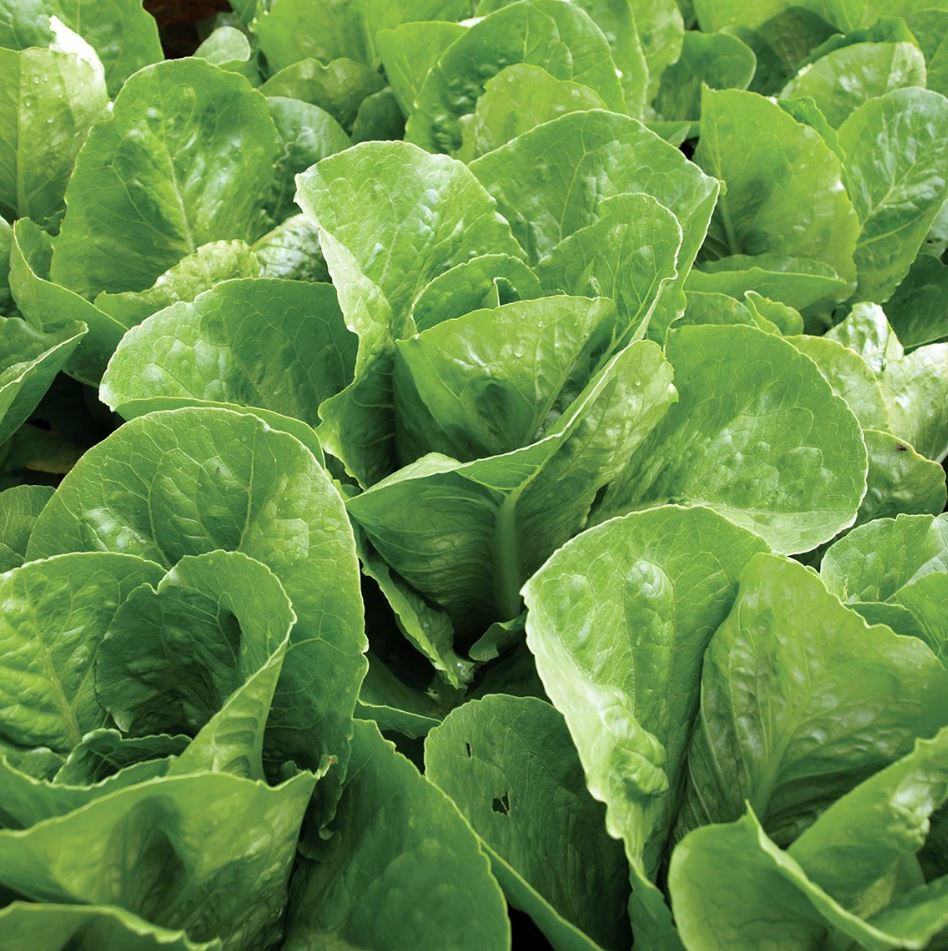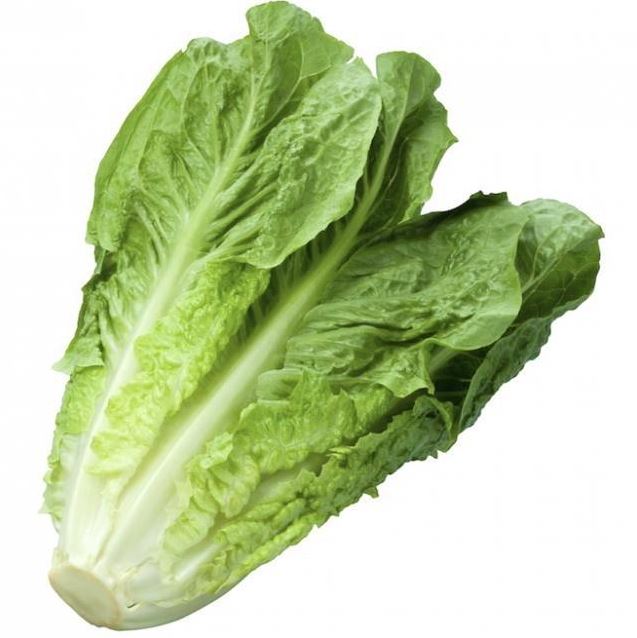Cos Lettuce Cultivation and Food Safety Concerns
Cos lettuce, scientifically known as Lactuca sativa L. var. longifolia, is a robust variety of lettuce distinguished by its elongated head, sturdy dark green leaves, and firm ribs down the center. Unlike other lettuce varieties, cos is particularly tolerant of heat, making it a favored choice in varied climates. It is commonly available in two forms: as whole heads or as “hearts,” which are the inner leaves sold in packs with the outer leaves removed. This versatility in presentation underscores its widespread culinary use.
This essay delves into the multifaceted aspects of cos lettuce, starting from its origins which are as rich and varied as its uses. The name “romaine” is derived from the French “laitue romaine,” indicating its historical connections to Rome, whereas “cos,” used primarily in British English, points to the Greek island of Cos, suggesting a fascinating journey from the Mediterranean to global gardens.
The cultural significance of cos lettuce extends beyond its etymology. It has been revered since ancient Egyptian times, where it was associated with fertility due to its phallic shape. Additionally, it holds a place in Jewish traditions during Passover as a bitter herb symbolizing the harshness endured by the Israelites in Egypt. Furthermore, its culinary prominence is marked notably in dishes like the Caesar salad, where its crisp texture and capacity to hold dressings shine.
However, the utility and enjoyment of cos lettuce have been marred by recurrent food safety issues, particularly concerning outbreaks of pathogenic E. coli. These incidents have sparked significant public health alerts and have led to rigorous scrutiny of agricultural practices, including the use of cattle manure and water sources for irrigation. This essay aims to explore these dimensions, shedding light on the integral role cos lettuce plays in both historical and contemporary contexts, and the ongoing efforts to ensure its safety as a staple food source.
| Aspect | Details | Cultural and Practical Implications |
|---|---|---|
| Botanical Characteristics | Known as Lactuca sativa L. var. longifolia, featuring elongated heads, sturdy dark green leaves, and firm ribs. Tolerant of heat, enhancing its adaptability to various climates. | Available as whole heads or “hearts,” the versatility in presentation underscores its widespread culinary use. |
| Historical Significance | Etymology reflects rich historical connections: “Romaine” from French “laitue romaine” and “Cos” from the Greek island, suggesting a Mediterranean origin. | Has cultural significance from ancient Egyptian times to Jewish Passover traditions, symbolizing fertility and historical endurance. |
| Culinary Uses | Notable for its role in Caesar salad where its crisp texture and ability to hold dressings are prized. | Its culinary prominence highlights its utility in diverse dishes, enhancing the dining experience with its unique texture and flavor profile. |
| Food Safety Concerns | Has been associated with outbreaks of E. coli, leading to public health alerts and scrutiny of agricultural practices. | These incidents have prompted improvements in food safety protocols and agricultural practices to ensure the safety of cos lettuce as a food source. |
Contents
Description and General Characteristics
Romaine lettuce, classified scientifically as Lactuca sativa L. var. longifolia, is a widely consumed leafy green known for its distinctive attributes and nutritional value. Unlike the round, compact heads of iceberg lettuce or the loose, curly leaves of leaf lettuce, romaine grows in a tall, upright head with long, sturdy leaves that have a crisp texture and a deep green color. The leaves are characterized by a prominent central rib that is both crunchy and capable of holding up well under heavy dressings, making it a preferred choice for salads and culinary preparations.

One of the standout characteristics of romaine lettuce is its heat tolerance. While many lettuce varieties wilt or degrade in warmer temperatures, romaine can withstand higher climates, which is attributed to its deeper root system and robust leaf structure. This trait not only extends its growing season but also broadens the geographical range where it can be cultivated effectively, ensuring its availability in markets year-round.
Commercially, romaine is sold in several forms. The whole heads are popular among consumers who prefer the freshness of assembling and chopping the lettuce themselves. In contrast, romaine hearts — which are essentially the inner leaves of the lettuce, with the outer leaves removed — are favored for their convenience and consistent quality. These hearts are often packaged in clear plastic containers, allowing for ease of use in both home kitchens and commercial food services. This segmentation in the market caters to varying consumer preferences and uses, from gourmet kitchens to quick-service restaurants.
| Feature | Description | Implications |
|---|---|---|
| Physical Characteristics | Grows in a tall, upright head with long, sturdy leaves that are deep green with a prominent central rib. | Excellent for salads and culinary preparations due to its crisp texture and ability to hold up well under heavy dressings. |
| Heat Tolerance | Can withstand higher climates without wilting, attributed to a deeper root system and robust leaf structure. | Extends growing season and broadens geographical cultivation range, enhancing availability year-round. |
| Commercial Forms | Sold as whole heads for consumers who value freshness and as pre-packaged hearts for convenience and consistent quality. | Caters to varying consumer preferences and uses, accommodating both home cooks and commercial food services. |
Origin and Etymology
The etymological roots of “romaine” lettuce reflect its rich historical journey and the blend of cultures that have cherished this vegetable. In North America, the term “romaine” is predominantly used, derived from the French “laitue romaine,” which means “Roman lettuce.” This name is believed to signify the route through which romaine lettuce was introduced to different regions, traveling from Rome to other parts of Europe and eventually to North America.
In British English, however, both “cos” and “romaine” are used interchangeably. The name “cos” is traced back to the Greek island of Cos, located in the Aegean Sea. Historical accounts suggest that the lettuce was brought from Egypt to Cos, from where it spread to other parts of Europe. The alternative derivation from the Arabic word ‘khus’ (خس), meaning lettuce, underscores the agricultural and cultural exchanges that occurred across the Mediterranean and Middle Eastern regions.
The introduction of romaine lettuce to Western Europe is deeply intertwined with these etymological origins. As it spread across the continent, various naming conventions emerged, reflecting local languages and cultural influences. For instance, it is called “lattuga romana” in Italian and “laitue romaine” in French, both literally translating to “Roman lettuce.” This nomenclature not only points to the historical spread and adaptation of romaine lettuce across Europe but also highlights its enduring association with Rome, an epicenter of historical trade and cultural exchange during ancient times.

Through this exploration of romaine lettuce’s description, general characteristics, and etymological roots, we gain insights into not only its physical and culinary qualities but also its fascinating historical journey across cultures and continents. This journey not only shaped the nomenclature and spread of romaine lettuce but also influenced its integration into various culinary traditions around the world.
| Term | Origin | Cultural and Historical Significance |
|---|---|---|
| Romaine (North America) | Derived from the French “laitue romaine,” meaning “Roman lettuce.” | Indicates the historical route of romaine lettuce from Rome to other parts of Europe and then to North America, emphasizing its introduction through cultural exchanges. |
| Cos (British English) | Traced back to the Greek island of Cos in the Aegean Sea. Alternately derived from the Arabic word ‘khus’ (خس), meaning lettuce. | Reflects the agricultural exchanges across the Mediterranean and Middle Eastern regions, highlighting how romaine lettuce spread from Egypt to Europe. |
| Local Nomenclature in Europe | Known as “lattuga romana” in Italian and “laitue romaine” in French. | These names translate to “Roman lettuce” in respective languages, underscoring the enduring association of romaine lettuce with Rome, a center of ancient trade and cultural exchange. |
Cultural Significance
Romaine lettuce holds a venerable place in the tapestry of cultural histories across the globe, symbolizing fertility, remembrance, and bitterness in various traditions. Its earliest known cultural association is with the ancient Egyptian god of fertility, Min. Romaine lettuce was revered not only for its nutritional value but also for its symbolic representation of fertility due to its long, upright growth and milky sap, which was likened to semen. This connection underscores the vegetable’s significance in rituals and religious offerings dedicated to Min, highlighting its role in promoting abundance and blessing.
In Jewish culture, romaine lettuce assumes a poignant symbolic role during the Passover Seder. It is one of the bitter herbs consumed during the meal, symbolizing the bitterness and harshness of the slavery that the Israelites endured in Egypt. The choice of romaine lettuce for this ritual stems from its bitter taste, particularly noted when the leaves are older or the base of the stem is consumed, where the bitterness is more pronounced. This practice is a deeply ingrained tradition during Passover, observed by Jewish communities worldwide to commemorate their ancestors’ suffering and resilience.
Furthermore, romaine lettuce was historically significant in the French Republican Calendar, a reformed calendar introduced during the French Revolution. The day of 22 Germinal, approximately April 11th by the Gregorian calendar, was dedicated to romaine lettuce, known simply as “Romaine.” This designation reflects the plant’s agricultural importance and the revolutionary ideals of equality and reliance on nature, marking each day with a plant, animal, or tool emblematic of the new social order.
| Culture | Symbolic Meaning | Context and Significance |
|---|---|---|
| Ancient Egyptian | Fertility | Romaine lettuce was associated with the god of fertility, Min, due to its long, upright growth and milky sap, symbolizing abundance and blessing in rituals. |
| Jewish | Bitterness of slavery | Used as a bitter herb during the Passover Seder to symbolize the bitterness and harshness of the slavery endured by the Israelites in Egypt. |
| French Republican Calendar | Agricultural importance | The day of 22 Germinal (approx. April 11) was dedicated to romaine lettuce, reflecting its significance in agriculture and revolutionary ideals of natural reliance and equality. |
Culinary Uses
Romaine lettuce is a staple in culinary applications, particularly noted for its use in salads, most famously the Caesar salad. This classic dish, originally crafted by Italian-American chef Caesar Cardini, features romaine lettuce for its crunchy texture and ability to hold up well under the rich, creamy dressing. The lettuce’s robust leaves make it an ideal choice for this popular salad, which combines simple ingredients like croutons, Parmesan cheese, lemon juice, olive oil, egg, Worcestershire sauce, and black pepper to create a distinctive and beloved dish worldwide.
Beyond salads, romaine’s culinary versatility extends to various cooking methods. It can be gently braised, adding a surprisingly tender texture and a mellow flavor to warm dishes. This method softens the firm ribs of the lettuce while maintaining some of its crunch, providing a pleasant textural contrast in dishes. Romaine can also be incorporated into soups, where it offers a subtle bitterness and structural integrity that survives the cooking process, adding both flavor and volume to light broths and hearty stews alike.

The unique flavor profile of romaine lettuce is also characterized by the milky fluid found in its ribs, which imparts a slightly bitter taste. This distinctive feature is particularly evident in the outer leaves and becomes more pronounced as the lettuce matures. This bitterness is not merely a byproduct of the plant’s natural defenses but a culinary characteristic that enhances the complexity of flavors in dishes. Whether used raw in salads or cooked in various dishes, romaine lettuce’s flavor and textural contrasts contribute significantly to its popularity and enduring presence in global cuisines.
Together, these cultural and culinary roles underscore the significant place romaine lettuce occupies in history and dining tables worldwide, illustrating its journey from ancient rituals to modern kitchens. Through its cultural symbolism and versatile culinary applications, romaine lettuce continues to be a cherished ingredient, celebrated for its rich history and its continued relevance in contemporary culinary arts.
| Culinary Use | Methods and Dishes | Flavor and Texture Contributions |
|---|---|---|
| Salads (e.g., Caesar Salad) | Romaine lettuce is used for its crunchy texture which holds up well under heavy, creamy dressings like those in Caesar salad. | The robust leaves are ideal for salads that require a sturdy base that complements rich and creamy dressings. |
| Cooking Methods (Braising, Soups) | Gently braised to add a tender texture to warm dishes, and incorporated into soups where it adds flavor and volume without disintegrating. | Softens the firm ribs, maintaining some crunch; offers a subtle bitterness that enhances the complexity of flavors in warm dishes. |
| Flavor Profile | The milky fluid in the ribs imparts a distinctive slightly bitter taste, especially pronounced in the outer leaves as the lettuce matures. | This bitterness adds a complex flavor dimension to dishes, enhancing the taste experience whether used raw or cooked. |
Food Safety Concerns
Romaine lettuce has frequently appeared in headlines not only for its nutritional and culinary value but also due to concerns over food safety, particularly related to E. coli outbreaks. These incidents have raised significant public health alarms and triggered responses from health authorities such as the Centers for Disease Control and Prevention (CDC) and the Food and Drug Administration (FDA).
One notable outbreak occurred from November 2017 through January 2018, when the Public Health Agency of Canada linked romaine lettuce to illnesses in 41 people across several provinces. Simultaneously, an associated outbreak in the United States affected 25 individuals in 15 states, resulting in one fatality. Despite extensive investigations, the CDC could not definitively confirm romaine lettuce as the source but noted its strong potential linkage. In response, both U.S. and Canadian health authorities issued warnings regarding romaine consumption and emphasized the importance of traceability and hygiene in handling leafy greens.
Further complications arose in mid-March 2018, leading the CDC to issue a blanket advisory against consuming romaine lettuce from the Yuma, Arizona, region. This decision came after identifying the region as the likely source of another E. coli outbreak, which resulted in five deaths and 89 hospitalizations across 32 states. The FDA traced the contamination back to water from a canal used for irrigation in the area, illustrating the vulnerability of agricultural water supplies to bacterial contamination.
Following these outbreaks, stringent measures were implemented to safeguard consumers. These included improved testing of water sources, enhanced tracking and documentation of crop origins, and heightened scrutiny of hygiene practices at all stages of the supply chain. Additionally, there was an increased push for rapid response protocols to contain and manage potential future outbreaks more effectively.
| Outbreak Period | Details | Response and Safety Measures |
|---|---|---|
| November 2017 – January 2018 | Linked to illnesses in 41 people in Canada and 25 in the US, with one fatality. Source not definitively confirmed but strongly linked to romaine lettuce. | Health warnings issued by CDC and Public Health Agency of Canada. Emphasized the importance of traceability and hygiene in handling leafy greens. |
| Mid-March 2018 | Linked to another outbreak from the Yuma, Arizona region affecting 89 hospitalizations and five deaths across 32 states. | CDC issued a blanket advisory against consuming romaine lettuce from Yuma. FDA traced contamination to canal water used for irrigation. |
| Post-Outbreak Measures | Following repeated outbreaks, authorities took action to prevent future incidents. | Implemented enhanced testing of water sources, better crop tracking, heightened hygiene scrutiny, and developed rapid response protocols. |
Growing and Distribution
Romaine lettuce is extensively cultivated in various regions of North America, adapting to seasonal shifts to ensure year-round supply. In the United States, major production shifts from Salinas, California during the summer to the Imperial Valley and Yuma, Arizona in the winter. These areas are chosen for their optimal growing conditions during different times of the year, which helps in managing the supply chain and meeting constant market demand.

Internationally, romaine lettuce is also grown in significant quantities in southern Spain, where it caters primarily to the northern European market. The cultivation relies heavily on migrant laborers, often from Africa, who play a crucial role in planting, tending, and harvesting the crops. This labor-intensive process highlights the global nature of vegetable production and the interconnectedness of different regions and demographics in producing food for international markets.
The global distribution of romaine lettuce underscores its role in international trade and the complexities involved in its supply chain. The movement of romaine lettuce across borders necessitates rigorous logistics planning, including temperature-controlled transportation and efficient customs processes to maintain freshness and quality upon arrival. Moreover, the international trade of romaine lettuce makes it imperative to have robust safety protocols in place to prevent the spread of contaminants across countries and continents.
These growing and distribution practices reflect the broader trends in global agriculture, where geographical, logistical, and labor considerations converge to meet the demands of a global consumer base. Through this complex network, romaine lettuce reaches tables around the world, its journey marked by careful cultivation, meticulous planning, and a constant emphasis on safety and quality.
| Region | Cultivation and Labor Details | Supply Chain and Safety Measures |
|---|---|---|
| North America (US) | Production shifts seasonally between Salinas, California in the summer and the Imperial Valley and Yuma, Arizona in the winter to ensure optimal growing conditions. | Year-round supply maintained through strategic geographic distribution, requiring advanced logistics and temperature-controlled transportation. |
| Southern Spain | Significant production catered to the northern European market, with heavy reliance on migrant laborers from Africa for cultivation processes. | Emphasizes the need for efficient customs processes and rigorous safety protocols to maintain freshness and prevent contamination in international trade. |
| Global Impact | Reflects the interconnectedness of different regions and demographics in global vegetable production. | Demands a robust network for logistics, safety, and quality assurance to serve a global consumer base effectively. |
Throughout this discussion, the multifaceted aspects of cos lettuce, from its deep-rooted historical significance to its prevalent role in contemporary diets, have been thoroughly examined. Cos lettuce is not just a staple in culinary practices worldwide but also a cultural symbol steeped in history. Its journey from the ancient fields of Egypt, where it was associated with fertility, to its ceremonial role in Jewish Passover, and its celebration in the French Republican Calendar, underscores its profound cultural footprint.
In terms of culinary applications, cos lettuce stands out for its robust texture and versatility. Ideal for a range of dishes from the iconic Caesar salad to innovative culinary creations like braised lettuce or lettuce soups, cos lettuce’s ability to blend into both traditional and modern cuisine highlights its global culinary appeal. This adaptability not only makes it a favored choice in kitchens around the world but also ensures its place as a central ingredient in diverse eating traditions.
However, the significance of food safety in the context of cos lettuce cannot be overstated. Recent years have seen numerous E. coli outbreaks linked to cos lettuce, bringing to light the vulnerabilities in the supply chains and the critical importance of stringent safety measures. These outbreaks have had significant implications for consumers, instigating widespread health alerts and recalls which, in turn, have prompted a reevaluation of agricultural practices, especially concerning water management and field sanitation.
The responses from health authorities like the CDC and FDA have been pivotal in managing these crises. Their guidelines and preventive strategies have led to enhanced safety protocols across the production and distribution spectrum. Measures such as better traceability systems, rigorous testing of irrigation water, and stricter compliance with hygiene practices are being implemented to mitigate the risks of contamination. These initiatives are crucial in restoring consumer confidence and ensuring that cos lettuce can be enjoyed safely by everyone.
Globally, the cultivation and distribution of cos lettuce reflect the dynamics of an interconnected world. The major growing regions in North America shift seasonally to optimize growing conditions and supply chains, illustrating the sophisticated agricultural practices that support global food systems. Internationally, the production involves a diverse workforce, highlighting the global nature of its cultivation and the reliance on an international labor force, which underscores the economic and social dimensions of cos lettuce production.
As we look forward, the ongoing efforts to enhance the safety and reliability of cos lettuce are essential. Continuous improvements in agricultural practices, coupled with advances in technology for better tracking and monitoring of produce, are vital. Additionally, education campaigns aimed at consumers about proper handling and washing techniques can further help in minimizing risks.
In conclusion, cos lettuce is more than just a leafy green; it is a symbol of cultural heritage, a pillar of global cuisine, and a testament to the challenges and achievements of modern agricultural practices. As it continues to be a dietary staple across the globe, the collective efforts of growers, regulators, and consumers will be paramount in maintaining its status as a safe, nutritious, and culturally significant food item.
Lettuce -Refreshing Chinese Lettuce with Ginger Soy Sauce
Cabbage Lettuce What’s the Difference?
Homemade In and Out Burger Lettuce Wraps A Low Carb Delight
Global Journey of Boston Lettuce From Kentucky Gardens
Comprehensive Guide to Buying and Cooking with Bibb Lettuce
Exploring the Versatility and Varieties of Batavia Lettuce
